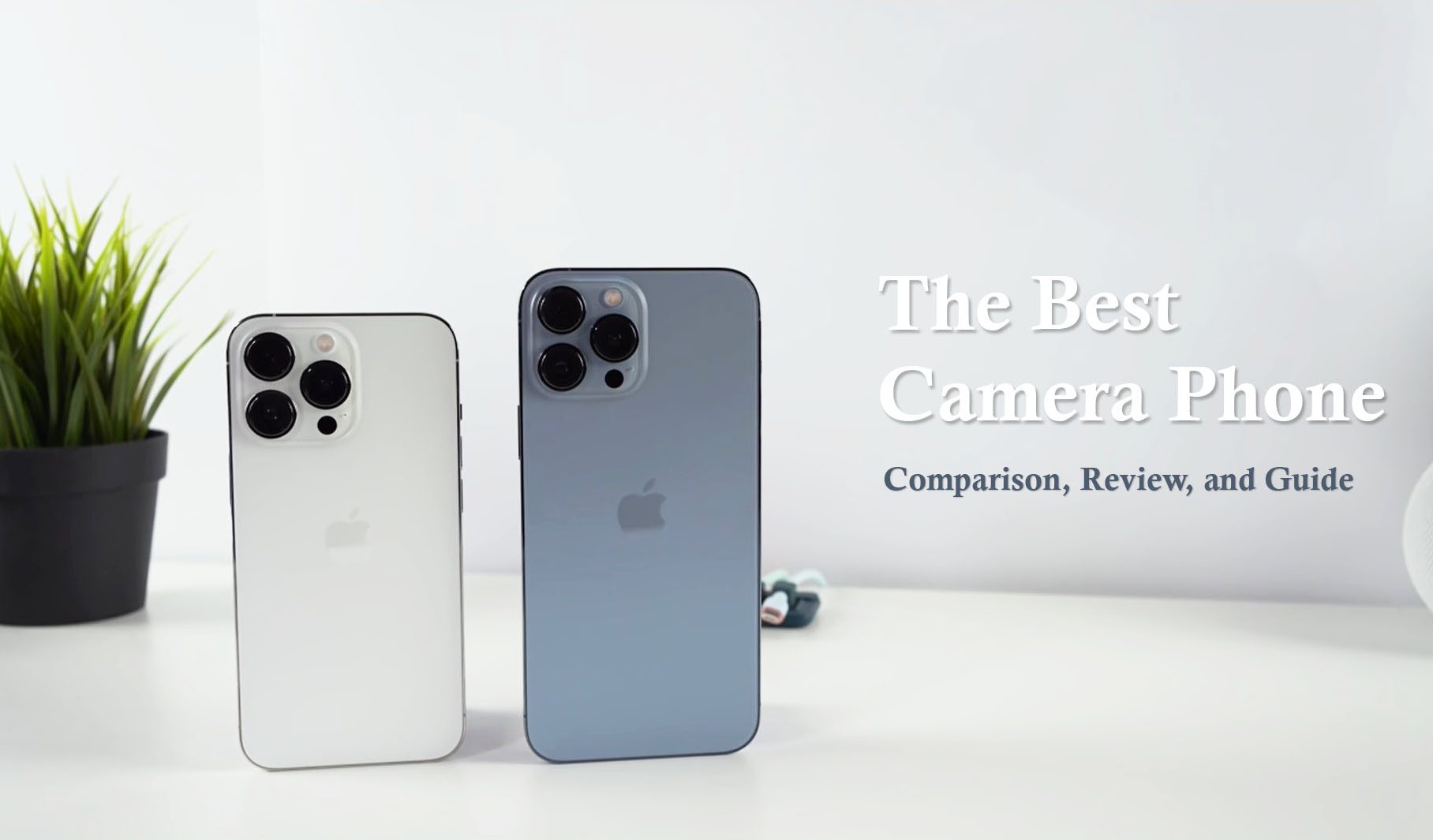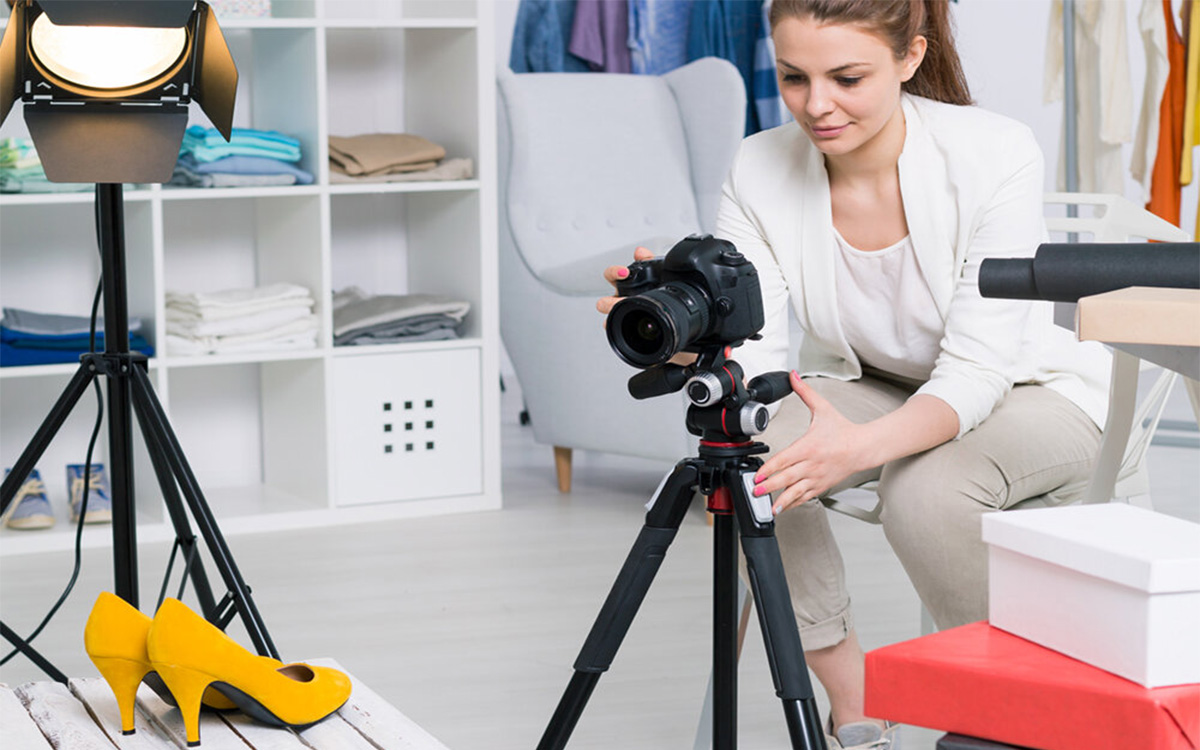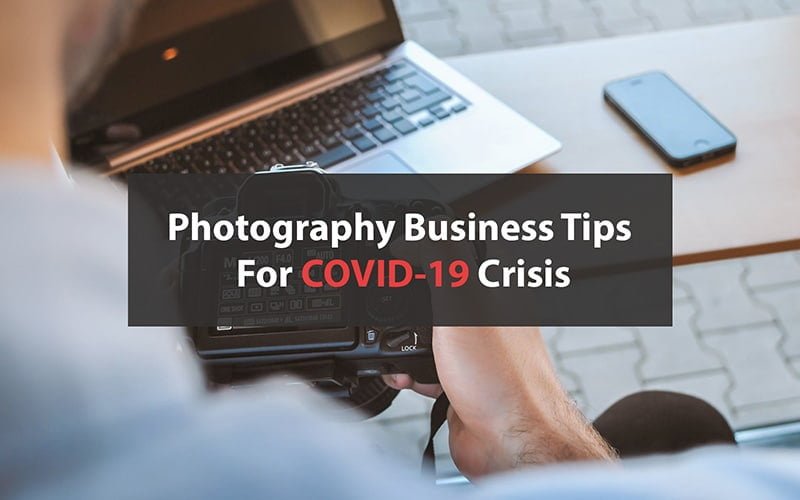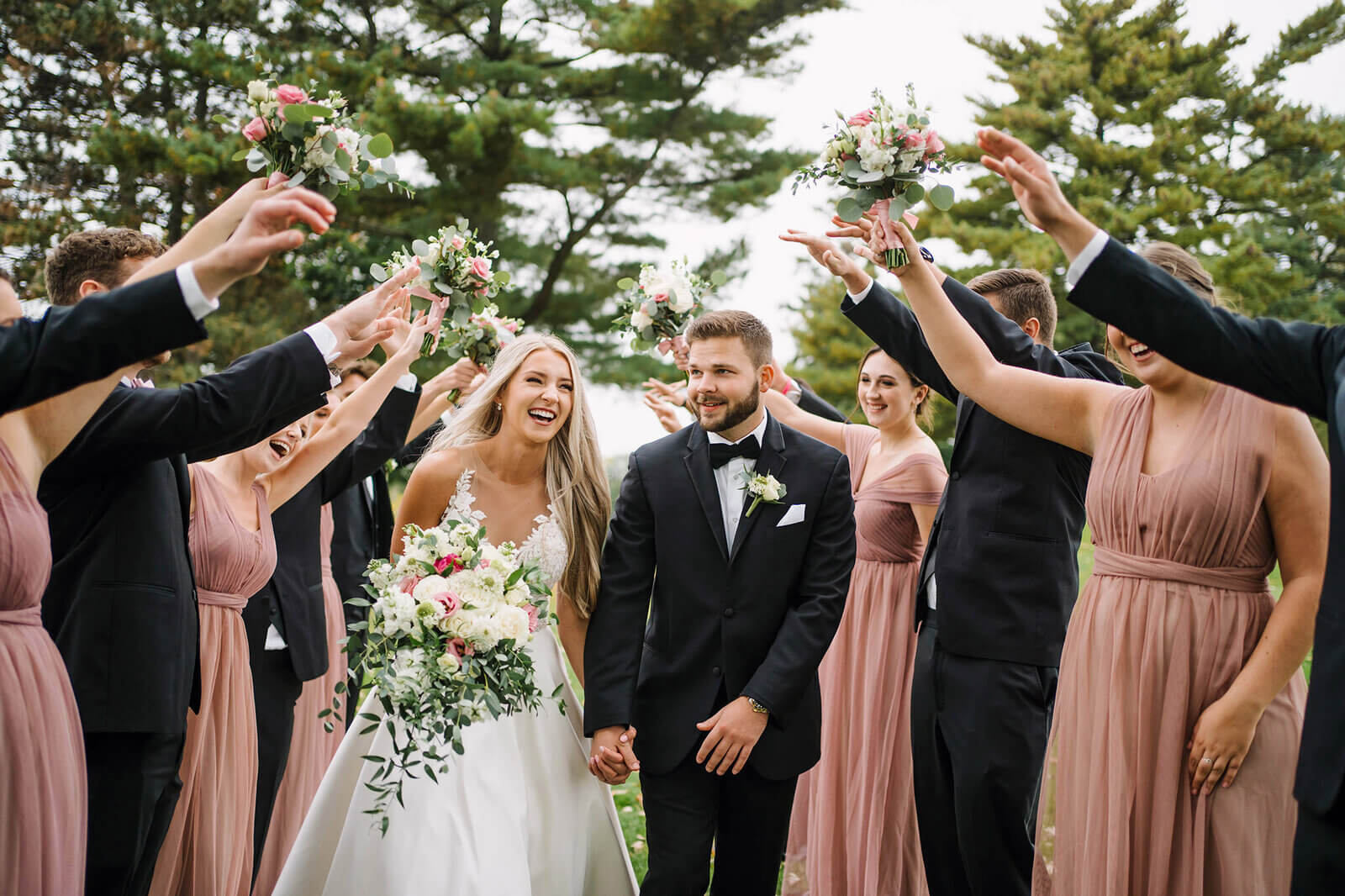Small businesses now use smartphone cameras for product photography more than ever. Flagships from leading smartphone manufacturers pack highly capable camera modules that can capture stunning-looking photos.
Some cameras offer more megapixels, whereas some decided to keep it minimal and focus on fitting a larger sensor inside their smartphones.
This year alone, a lot of well-capable smartphones were released that take stunning quality photos. But when compared side by side, each of them has their own field of expertise.
So, before you choose the best camera phone for photography, you need to determine for what reason you will be using the camera most. This would be a huge deciding factor.
While making this list, we considered the camera sensor size, number of cameras, color production, software utilization, color reproduction, and performance for capturing close-distance objects.
Is It a Wise Idea to Buy a Smartphone for Product Photography?
Higher-end smartphones these days are quite capable of capturing breathtaking pictures. The same goes for product photography.
If you are looking for one for your business, you probably already have a studio setup with good lighting gear. If the studio got enough lighting, the best camera phone could make your product look colorful and vibrant.
When compared with an SLR camera, there will still be some minor differences. But considering the price of a mainstream camera, a smartphone camera will be much more cost-efficient.
So, yeah, smartphone cameras are great for product photography if the camera hardware knows how to deal with colors and close-distance objects.
Get the Guide: Instagram product photography ideas
What you’ll learn in this article
Top 9 Best Smart Camera Phone for Product Photography in 2024
Whether you prefer an iPhone or Android camera phone, the list includes both types. Also, there are both highly expensive to low-range smartphones ideal for product photography.
1. iPhone 13 Pro & Pro Max

The first pick isn’t any surprise. It’s the iPhone 13 Pro & Pro Max, as both these models come with the same camera hardware. Although the overall hardware upgrade isn’t too overwhelming, in the camera section, it crushes most higher-end flagships.
To capture the perfect shot every time, it packs a 12MP rear camera sensor, which is equivalent to a 26mm lens. With f/1.5 aperture, photos in low light look absolutely stunning. The lens allows enough light to enter to make sure your product photography looks like professional stuff.
Where most flagship smartphones only seem to end with larger aperture and lens size, Apple is one step ahead of them with a larger 1.9µm pixel size. So, from every angle, images will look breathtaking while making them more real.
As a secondary camera, Apple used a 12MP sensor with f/2.8 aperture, which is more than enough to zoom up to 3x. And the zoom is, of course, optical zoom.
So, no compromise with enlarging objects while shooting. If you are to zoom in for capturing any specific product photo, it will make sure the images don’t get too blurry.
With its 12MP ultrawide lens, you can take wider shots as well as macro pictures. This lens got f/1.8, and it gets bright enough in low light compared to other flagships. Even though the overall design and hardware upgrade aren’t that noticeable, if you want to get the newer model, it would be the best phone for photography.
Apart from all these, you can shoot 4K videos at different fps settings up to 60 fps.
This camera hardware is excellently controlled by the iOS 15 operating system and the camera app itself. Apple A15 Bionic 5nm processor is powerful enough to provide you with a seamless photography experience.
Get the Guide: Creative Product Photography Ideas for Photographers
| Pors | Cons |
| 4K video shooting at up to 60 fps | Expensive |
| Great aperture rating for low light photo shooting | Limited changes compared to iPhone 12 |
| Larger pixel size puts it ahead of the camera battle | |
| Ultrawide lens up to 120-degree, can also take macro images | |
| Powerful processing power with a highly optimized camera app | |
| Telephoto lens takes great looking portraits, can zoom without ruining images |
2. Xperia PRO-I
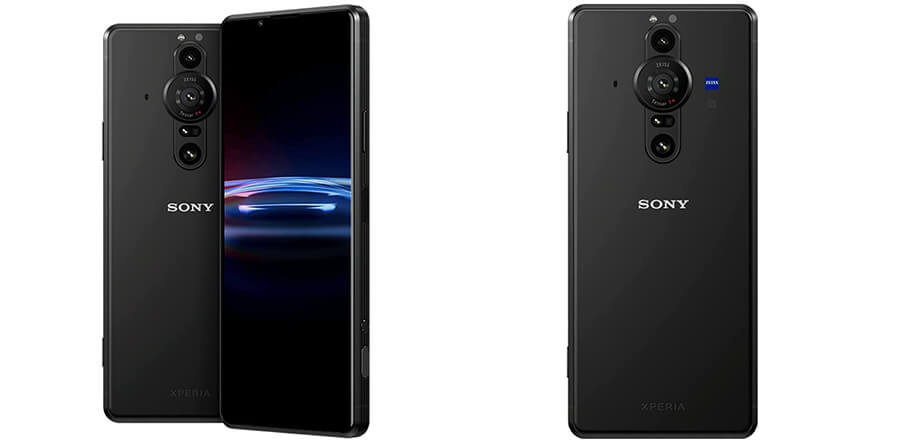
This is the most hyped smartphone camera because of its 1-inch main camera sensor. Yeah, you read it correctly—a 1-inch sensor in a smartphone. Pro-I takes great-looking pictures that look pretty real, and Sony doesn’t bother much about HDR and stuff.
For product photography using a smartphone, you won’t need a 1-inch sensor, but Sony Xperia insists. And it’s one of the milestones for smartphone cameras to compete with regular DSLR or mirrorless cameras.
On paper, the rear camera sensor is crazy big for any smartphone to this day, but it only manages to use a 1/1.3-inch sensor because of its limited space inside the housing. After all, it’s for a regular camera.
But, don’t get me wrong. It still takes great-looking pictures with a much better dynamic range. If you are to get a highly expensive smartphone camera with lots of manual camera settings, you won’t regret buying it.
The main lens got a dual aperture of f/2 and f/4. As for low lighting shots, images don’t come as bright as some of its competitors. But if you will be using it with proper lighting and studio photography arrangement, it won’t be a deal-breaking thing.
With 2x optical zoom, its telephoto lens is also larger than others in the competition. Portraits and close shots will be much better using this camera. And this is what really matters for product photography.
The camera app is a killer, and it does a great job optimizing the images with the power of the Snapdragon 888 5G processor. Sony Xperia Pro-I is only available in 12/512GB variant to justify its insanely higher price tag.
| Pros | Cons |
| Plenty of power for a smartphone | Crazy high price tag |
| Sleek looking design makes much appeal | Still struggles in low lighting conditions |
| Great telephoto lens for product photography | |
| Decent battery life even while taking a lot of photos | |
| 1-inch sensor takes better-looking photos in most cases | |
| Zeiss optics with glass camera construction for better optical quality |
Get the Guide: How Much Does Product Photography Cost
3. Galaxy S21 Ultra 5G
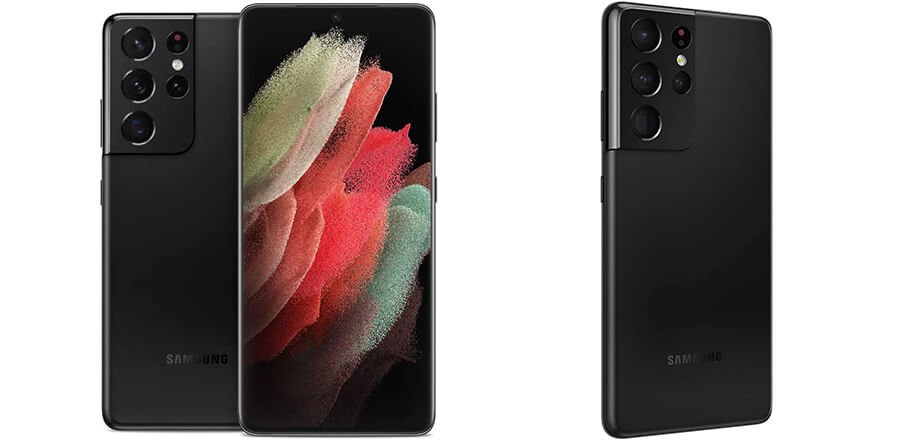
This was probably the talk of the town regarding smartphone cameras in 2021. Samsung has packed this flagship with strong and pretty capable camera hardware that lives up to the exception.
If you know about cameras, you won’t be fooled by Samsung’s marketing strategy for this model. Its 108 MP rear camera sensor sounds a lot, but it’s not a lot superior when compared to some of the smartphone cameras with a 12 MP main sensor.
However, with an f/1.8 aperture, it takes great-looking photos even in low light. The primary lens is large enough to capture stunning photos, be it landscape, portrait, or regular photography. The 1/1.33-inch lens is one of the powerful camera hardware that we’ve seen this year.
The main telephoto lens got 3x optical zoom, which is similar to the iPhone 13 Pro Max. You can capture breathtaking portraits under any lighting conditions. Its zooming capability doesn’t compromise the image quality. This also helps to take great-looking product photographs.
Taking shots from a close distance or a bit far, your products will look great in the picture. The pixel size of this telephoto lens deserves some attention as well. It’s 1.22µm in size, which is more than enough for most photography needs.
Samsung Galaxy S21 ultra also packs an ultrawide 12 MP f/2.2 camera sensor that handles macro photography like a pro, which makes it the best phone for macro photography on this list.
| Pros | Cons |
| Can shoot 8K videos at 30/60 FPS | No microSD card slot |
| 3x optical zoom capability with less noise | Headphone jack unavailable |
| Great macro photography performance from its ultrawide lens | |
| Great battery life with 25W fast charging and wireless charging | |
| The front camera takes crisp and sharp selfies even in low light | |
| Pretty capable camera lenses to take stunning images even in low light |
4. Samsung Galaxy S10
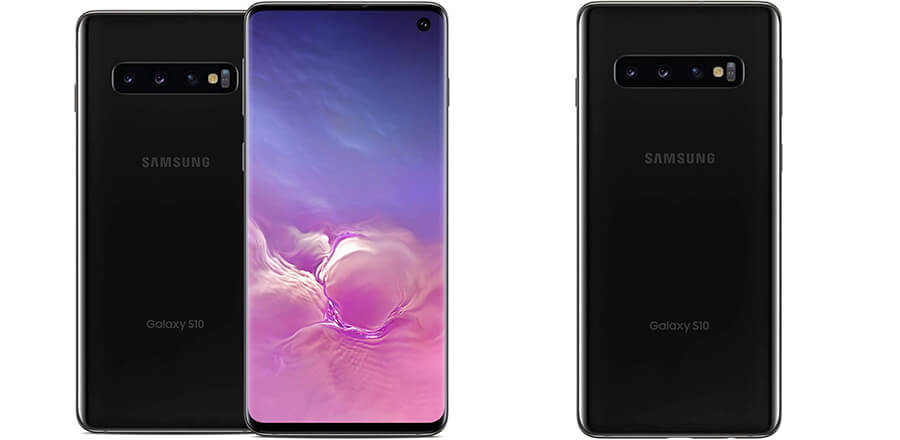
At a relatively lower price tag than the Samsung Galaxy S21 Ultra, Galaxy S10 packs great camera hardware for product photography as well as other photography requirements.
The main rear camera got a 12MP 1/2.55-inch sensor with an f/1.5-2.4, which does an excellent job capturing moments under different lighting conditions. You can switch the aperture depending on the object and background to make sure the image comes as you would expect.
As a telephoto lens, Samsung used another 12 MP 1 /3.6-inch sensor with 2x optical zoom. The aperture is f/2.4, which is still decent for this type of lens to get you enough light for product photography or portraits.
If you are a big fan of ultra-wide-angle shots, you won’t be disappointed by its 16 MP 1/ 3/1-inch shooter. With an aperture of f/2.2, it can’t compete with some of the flagships in the list, but still much better than most smartphone cameras out there.
For selfies and stuff, the device offers a 10 MP shooter with f/1.9 to make sure you look great even in low lighting conditions. The lens is large enough for a selfie camera, so is the pixel size of it, being 1.22µm.
You can shoot 4K videos at 30/60 fps, whether for regular video shooting or cinematics.
All the hardware is very complementary to its cameras. The app makes the most out of that hardware and brings great-looking photographs with vivid and rich colors. For a mid-range budget, it’s the best Samsung phone for photography.
The phone is available in both Exynos and Snapdragon variants with up to 8/512GB. Its 3400 mAh battery lasts more than average, even with a lot of photos capturing and video shooting tasks.
| Pros | Cons |
| Battery life is more than average | Need to press a bit hard on the on-screen fingerprint sensor |
| Shoots 4K videos with relatively less noise | |
| Main camera provides excellent low light images | |
| Pretty compact in hand with top-notch premium finish | |
| Ideal telephoto lens for close product photography and portraits |
5. Apple iPhone 12 Pro
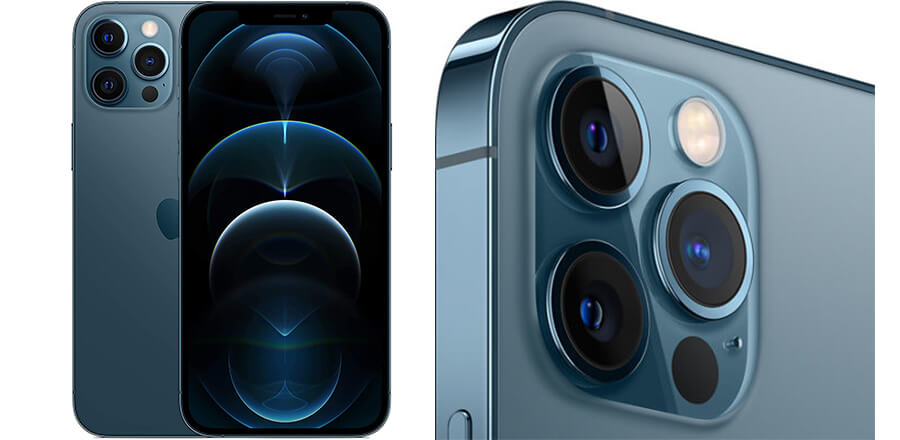
Although it’s been more than a year since iPhone 12 Pro got released, it got pretty good camera hardware for excellent phone photography and videography. Except for the camera and higher refresh rate display, the overall design and hardware don’t have any noticeable difference when compared with the new iPhone 13 models.
To make sure all your captures stand out, it got a dual pixel 12 MP f/1.6 that is able to produce images with 1.4µm pixel size. For most cases, this primary lens is enough.
Like a telephoto lens, the iPhone 12 Pro packs a 12 MP f/2 shooter with 2x optical zoom. The aperture is pretty good, considering the fact that it gets you 2x zoom in pictures. Portraits will come great, so will product photography with this lens.
The third lens is for ultra wide camera and macro shots. With an f/2.4, this 12 MP sensor still takes great-looking wider pictures compared to other flagships in the market.
If you are into macro photography and stuff, this lens will capture great macro shots with different lighting conditions.
Its selfie camera is still one of the best even in 2021. With an f/2.2 aperture, the 12 MP sensor will make sure you look realistic when you are framed.
It packs a 2816 mAh battery, so the battery life might not be satisfactory for heavy photography.
| Pros | Cons |
| Takes stunning landscapes and portraits | Below-average battery life |
| Can shoot 4K up to 60 fps without running too hot | Charging block not provided |
| Great deal considering the price of the recent iPhone 13 Pro | |
| Ideal for ultra-wide and macro shots in different lighting conditions | |
| Powerful processor and camera app to add great finishing to images |
6. Google Pixel 6 Pro
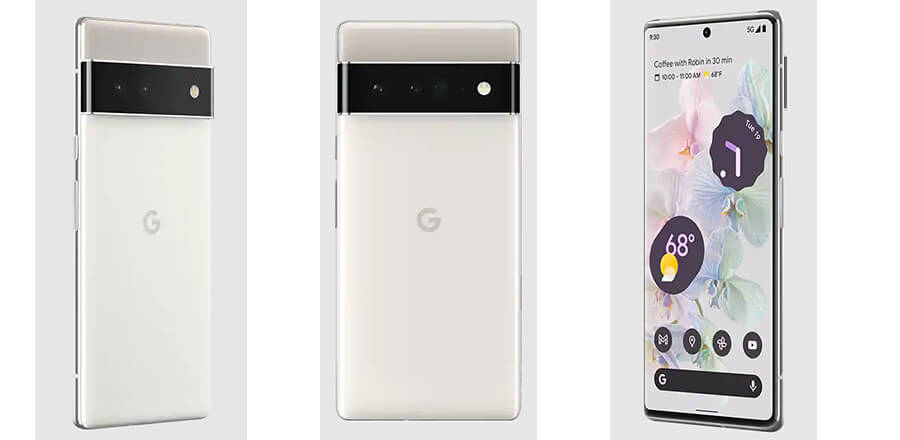
With a more prominent main camera sensor and powerful telephoto and ultra-wide cameras, the Pixel 6 Pro stands for the best android phone for photography to this day. If you are to get the ultimate android user experience, you can’t go wrong with this device.
As the main camera, it has a large 50 MP 1/1.31-inch sensor to capture stunning images regardless of the lighting conditions. Although the aperture isn’t extraordinary on paper, the f/1.9 aperture takes decent quality pictures in low light.
All credit goes to Google’s camera app to make it the best phone for night photography.
The telephoto lens is pretty impressive too. It’s a 48 MP ½-inch sensor that can capture up to 4x optical zoom. But, it didn’t stand well against competitors due to lower 0.8µm pixel size photo quality in the real-life test. However, the optical image stabilization is there to make up for the pixel size.
In portrait mode, this Google Pixel device won’t disappoint you whatsoever. Also, for product photography, you will see noticeable differences if you have been using a flagship device of another manufacturer.
Its ultrawide lens with f/2.2 aperture allows enough light for great-looking wider and macro shots pretty much every time.
For selfies, it packs an 11.1 MP shooter with f/2.2 aperture, which does a great job capturing nice-looking sharp selfies.
Google’s new Tensor, 5nm processor, seems to be great to provide all necessary support for its stunning-looking shots. But the battery life wasn’t that impressive for a 5003 mAh power pack. It is also compatible with 23W wireless charging.
| Pros | Cons |
| It takes best looking photos in most cases | Average battery life |
| Ultrawide sensor takes great macro images | |
| Superb design with top notch 120Hz display | |
| A bigger sensor makes images look crisp and sharp | |
| Powerful camera app to bring the most out of its camera hardware |
7. Samsung Galaxy S20 Ultra 5G
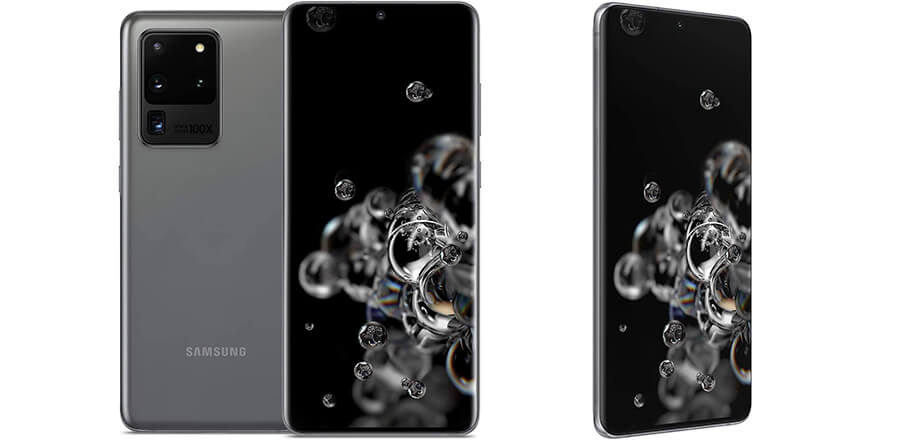
If you don’t need the regular telephoto lens, this can be the best smartphone camera deal you can get.
The main camera in this device is the same camera that you see in S21 Ultra. So, you can expect it to take great images in both low and normal lighting conditions.
The 108 MP 1/1.33-inch sensor allows more light to enter. Thanks to its f/1.8 aperture, it can take amazing photos in night mode, making it the best phone camera for food photography.
As a periscope telephoto lens, the 48 MP sensor with f/3.5 achieves 4x zoom. But the pixel size isn’t that great. So, overall, if the lighting condition is better, it will take decent photos. Otherwise, this telephoto camera is an average one.
It has a 12 MP sensor with an f/2.2 aperture for ultrawide shots. Images look great with 1.4µm pixel size. Furthermore, it also allows you to take great-looking photos in macro mode. The depth sensor will add details to your images to enhance the quality.
On the front, the selfie camera is a great one when compared to competitors. The 40 MP sensor with f/2.2 aperture manages to take decent photos even in night mode. All credit goes to its larger sensor for this.
The rear camera allows 8K at 24 fps and 4K up to 60 fps for video shooting. So, the cinematic mode shooting will be decent compared to recent flagships.
| Pros | Cons |
| Smooth and great looking 120Hz display | The telephoto lens isn’t that great |
| Decent battery life with 45W fast charging | |
| Video at 8K and 4K for limitless videography possibilities | |
| It takes much better ultra-wide pictures than most camera smartphones | |
| A larger main camera sensor does wonders at taking consistent quality images |
8. Huawei P50 Pro
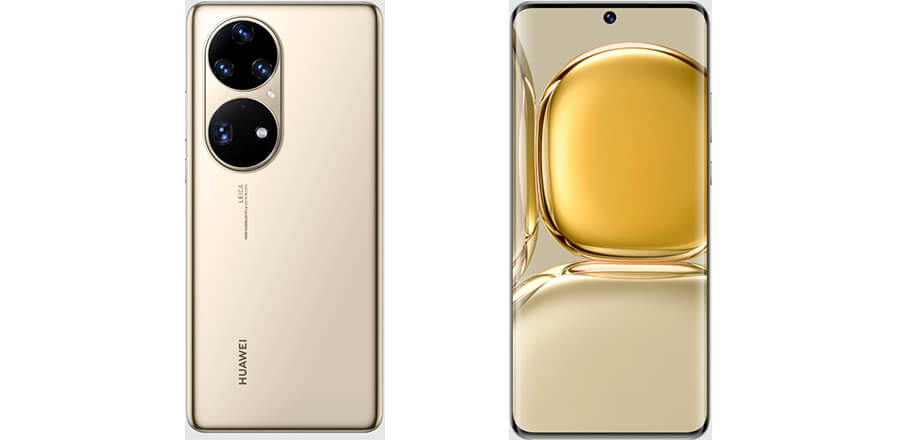
Are there any Huawei fans? Huawei flagship smartphones come with remarkable camera hardware. Their highly optimized camera app makes the most out of the hardware to get you consistent image quality regardless of the lighting condition. This P50 Pro isn’t any exception to that.
The main camera does most of the wonders. It has a large 50 MP sensor with f/1.8 to take great quality images. And it did exactly that in the actual test. Also, the laser AF makes sure objects are well-focused, even in indoor lights.
Huawei used a 64 MP sensor with an f/3.5 aperture for the telephoto lens. This lens manages to get more than 3.5x optical zoom in images while maintaining the image quality.
You will also get quality ultra-wide images out of its 13 MP sensor. With aperture f/2.2, it manages to take decent photos even in low light.
In addition, the camera hardware also has a 40 MP depth sensor of f/1.6. It further adds details in images to make them look amazing.
The selfie camera is as you would expect from Huawei – it’s top-notch. This 13 MP wide sensor gathers enough light for close objects with an f/2.4 aperture.
The camera allows 4K at up to 60 fps for video shooting. And the video quality is up to the mark.
With a 4360 mAh battery, it provides amazing battery life. Also, it supports 66W fast charging along with 50W wireless fast charging.
| Pros | Cons |
| Available in Snapdragon chipset variant | Expensive to others smartphone |
| Macro mode for small objects photography | |
| Images quality comes great in both indoors and outdoors | |
| Decent battery backup with fast charging and fast wireless charging | |
| The powerful ultra-wide lens captures wider photos with decent lighting |
9. Xiaomi Mi Note 10
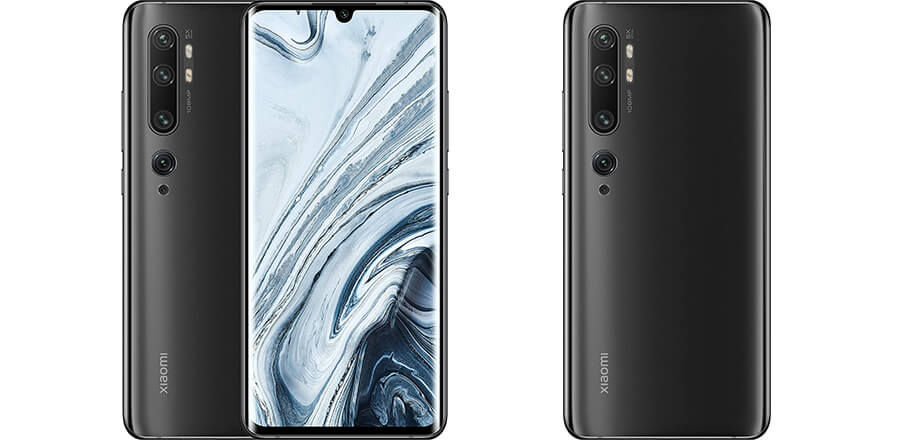
I was pretty impressed by the camera setup of this budget-oriented smartphone from Xiaomi. If you don’t want to spend a higher price for a flagship and instead want a budget-friendly device for product photography without compromising image quality, this would be the best phone for photography.
Don’t be overwhelmed by the marketing tactics of the 108 MP camera sensor. Although it’s quite a large sensor, the MP thing isn’t anything but marketing. However, the images come great and are pretty comparable with higher-end flagships.
The main camera is a 1/1.33-inch sensor with 108 MP. With an f/1.7 aperture, it takes stunning low-light images in night mode. The camera app is well optimized for making the most out of this camera system. Although the pixel size is relatively small, for good aperture, images come great. That is what makes this device the best midrange camera phone for 2021.
A telephoto lens is a 12 MP sensor with an f/2.0 aperture that takes decent quality portraits and product images from a close distance. With up to 2x optical zoom, you won’t notice any issues in pictures.
There’s another telephoto lens of 8 MP with an f/2.0 aperture. But, this one got a relatively low pixel size on paper.
The ultra-wide shooter is a 20 MP sensor with an f/2.2 aperture. So, there won’t be much to complain about, even if you take wide angle pictures in low light.
An additional macro camera is also there, but the quality isn’t up to the mark when compared to autofocus ultra-wide lens macro photography.
The front camera got a 32 MP sensor with an f/2.0 aperture to make sure selfies get enough light even in indoor lighting conditions.
To provide days of battery backup, it packs a 5260 mAh battery. It will easily last at least 1 day of heavy use.
| Pros | Cons |
| Can shoot 4K videos at 30 fps | It feels bulky in the hand |
| Large battery with days of backup | Design isn’t that premium |
| 30W fast charging, 58% in 30 min | |
| Great bang for bucks for cell phone photography | |
| Ideal for night photography as well as product photography | |
| The image quality out of the main camera lens is impressive | |
| Much better wide-angle photos compared to its competitors |
Things to Consider Before Buying a Smartphone for Product Photography
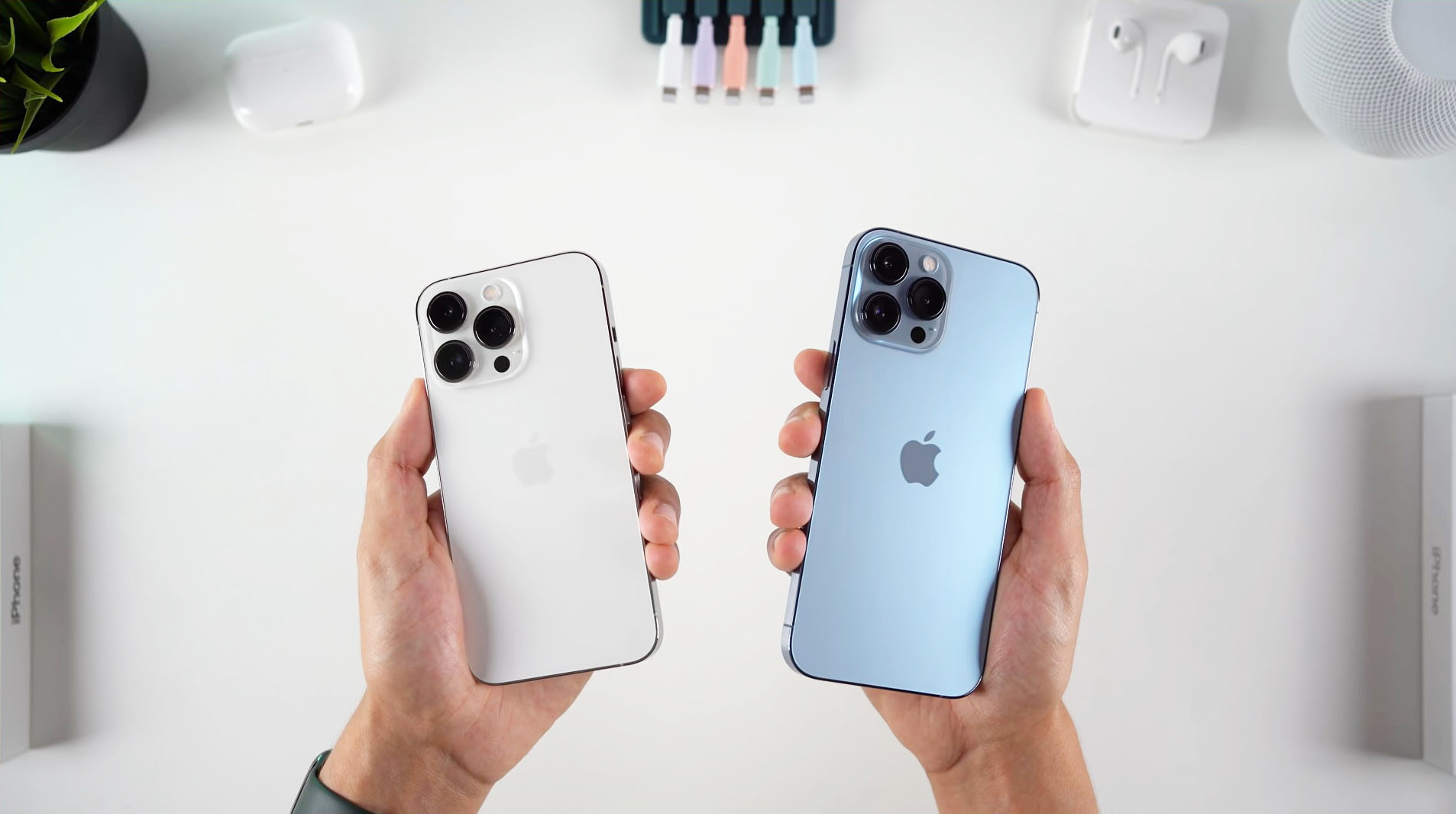
When choosing the best mobile phone for photography, apart from the regular specs, you will need to make sure the camera system is decent for your product photography.
Now camera specs and hardware can be a bit confusing. The following information will help you understand camera phone specs and which one you should go for.
Sensor Size
The most crucial factor is the sensor size. Usually, megapixels indicate how capable the sensor is. However, manufacturers these days come with a marketing thing that highly emphasizes the camera megapixels. A camera can have 48 MP but still can’t take good shots.
In contrast, only a 12 MP sensor in most Google Pixel and iPhone devices can capture great-looking photos.
So, here’s the thing. Apart from the MP, check for the sensor size as well. The largest sensor for any mobile phone is 1-inch to this day. Sony Xperia has managed to fit such a large sensor in their Xperia Pro-I flagship model.
These sensors can be 1/1.1, 1/1.2, 1/1.3, 1/1.5, 1/1.7, 1/1.9, 1/2.55-inch, and so on. The smaller the number, the larger the sensor.
If a camera phone claims to include a 103 MP sensor, but the actual size is 1/2.55, and another camera phone with 12 MP, with a 1/1.3-inch sensor, then the photos taken in the second camera would be of higher quality.
So, yeah, only MP doesn’t matter. You need to consider the actual size of the sensor as well.
Main or wide cameras on smartphones these days come with relatively larger sensors than the other 2-3 cameras included in every cell phone.
Telephoto cameras have smaller sensors, as they’re not used to take pictures primarily. It comes to action when it’s about taking portraits and close distance shots like product photography.
An ultra-wide camera can be smaller or larger than a telephoto lens camera. It entirely depends on the manufacturer for whatever reason they made that smartphone. If their marketing is primarily for ultra-wide angle photos, then this sensor will be bigger than the telephoto sensor in that smartphone.
Aperture
This particular spec indicates how much light the camera lens allows to enter into the actual sensor. The smaller the number, the more light will pass through the lens.
Smartphone cameras have apertures as low as f/1.5, which is what we see in the iPhone 13 Pro Max. The larger the number, the less light can enter through the lens. f/1.5 to f/1.9 are found in expensive flagship smartphones.
If you buy the best camera phone for night photography, this is the feature you should look for. A suitable aperture level will make sure photos come bright even if the lighting condition is poor. For indoor and food photography, it’s the key spec.
Typically, wide angle lenses have low aperture numbers as this is the primary lens that takes photos in the first place.
Then ultra wide angle lenses have larger numbers. Telephoto lenses have even larger numbers.
So, try to pick a device for smartphone photography with a low aperture number for its main camera, followed by its ultra wide angle lens and telephoto lens.
Pixel Size
The pixel size also dictates the camera quality. Simply put, it’s referred to as µm. The larger the number, the better the image quality.
In iPhone 13 Pro Max, the pixel size is 1.9µm for its main camera. Whereas the pixel size in Pixel 6 Pro is 1.2µm. On paper, 1.9µm is better for taking photos.
But if the sensor size in a particular camera is larger, then it will take better quality pictures than a camera with larger pixel size and smaller sensor. The sensor size of Pixel 6 Pro is larger than what’s in iPhone 13 Max Pro. So, Pixel takes overall good images in most cases.
Auto Focus
How well a camera captures an object depends on the auto focusing ability. The object will be blurry if the auto focusing is poor, and you want to capture an image real quick. It also indicates how fast a camera lens can focus on objects. Higher end flagships can focus quickly.
However, this might not be a deal-breaker for product photography. But for random clicks and go-the-go shooting, it’s a must—the quicker the focus, the better images you can take.
Video Shooting
Most flagship camera phones allow 4K video shooting at different fps settings. If you are recording many videos in cinematic mode, be sure to pick a smartphone that shoots a 4K video at 24/30 fps. iPhone 13 Max Pro and Google Pixel 6 Pro are the ideal choices for this purpose.
Some cameras are capable of 8K video recording. These are the most expensive smartphones out there, and Samsung Galaxy S21 Ultra is one of them.
Software Optimization
The optimization of software, as well as the camera app, matters a lot. That is what makes Google Pixel smartphones one of the best image capturing mobile devices.
In many cases, with similar camera specs, Pixel phones knock off their competitors from Apple and Samsung. They are considered the best android camera phone of their time.
You will see Oneplus devices with relatively similar camera setup produce fewer quality images when compared to Samsung and Google Pixel. It is because of the incapability of their camera app.
So, along with hardware and specs, you need to make sure the camera app can collaborate perfectly to bring the most out of the hardware.
Processor
High-resolution images, as well as videos, take a lot to process. If the processor isn’t powerful, you will have to wait longer to finish processing and click the next photo. It can be embarrassing if you have to take multiple shots at a time. So, make sure the processor can deliver the power that the camera demands.
Battery
Using the camera app drains a lot of juice. So, if you will be taking many photos on a regular basis, make sure you get a device with a larger battery. Fast charging compatible camera phones will be extremely useful as well.
Frequently Asked Questions
Q: What is the best phone for photography?
Ans: If you’re looking for one of the best camera phone for product photography, look no further than Apple’s latest release: iPhone 13 Pro & Pro Max. With the iPhone 13 Pro & Pro Max, Apple has made advancements to the camera that go beyond adding lenses.
Q: Which mobile photo do people use most for photography?
Ans: When it comes to smartphone photography, people mostly rely on devices from iPhone, Google Pixel, Samsung Galaxy S, etc., for their powerful camera components and specs.
Q: Can you take professional photos with a smartphone?
Ans: Professional level photography is possible using higher-end flagship smartphones that allow users to shoot in manual mode. Samsung Galaxy S21 Ultra, Google Pixel 6 Pro, iPhone 13 Pro Max are capable of shooting professional-grade photographs.
Q: Can I take product photography using a smartphone?
Ans: If the lighting is good, or you will be shooting in a mini or portable studio, a camera smartphone can actually take really good product photos, even for e-commerce sites.
Q: What phone has the best picture quality?
Ans: In terms of photo quality, iPhone 13 Pro Max, Google Pixel 6 Pro, Samsung Galaxy S21 Ultra, Sony Xperia Pro-I are the best. Each of these camera phones has great camera hardware along with a highly optimized camera app to capture the best quality image.
Final Words
No matter which one you choose now, smartphone cameras will get better the next year. So, the best camera phone for photography would be one that serves your photography purposes the most. iPhone 13 Pro Max, Google Pixel 6 Pro, Samsung Galaxy S21 Ultra are the best camera phones you can get.
If you want to go with a relatively cheaper yet decent camera phone, Xiaomi Mi Note 10 would be the right pick.
